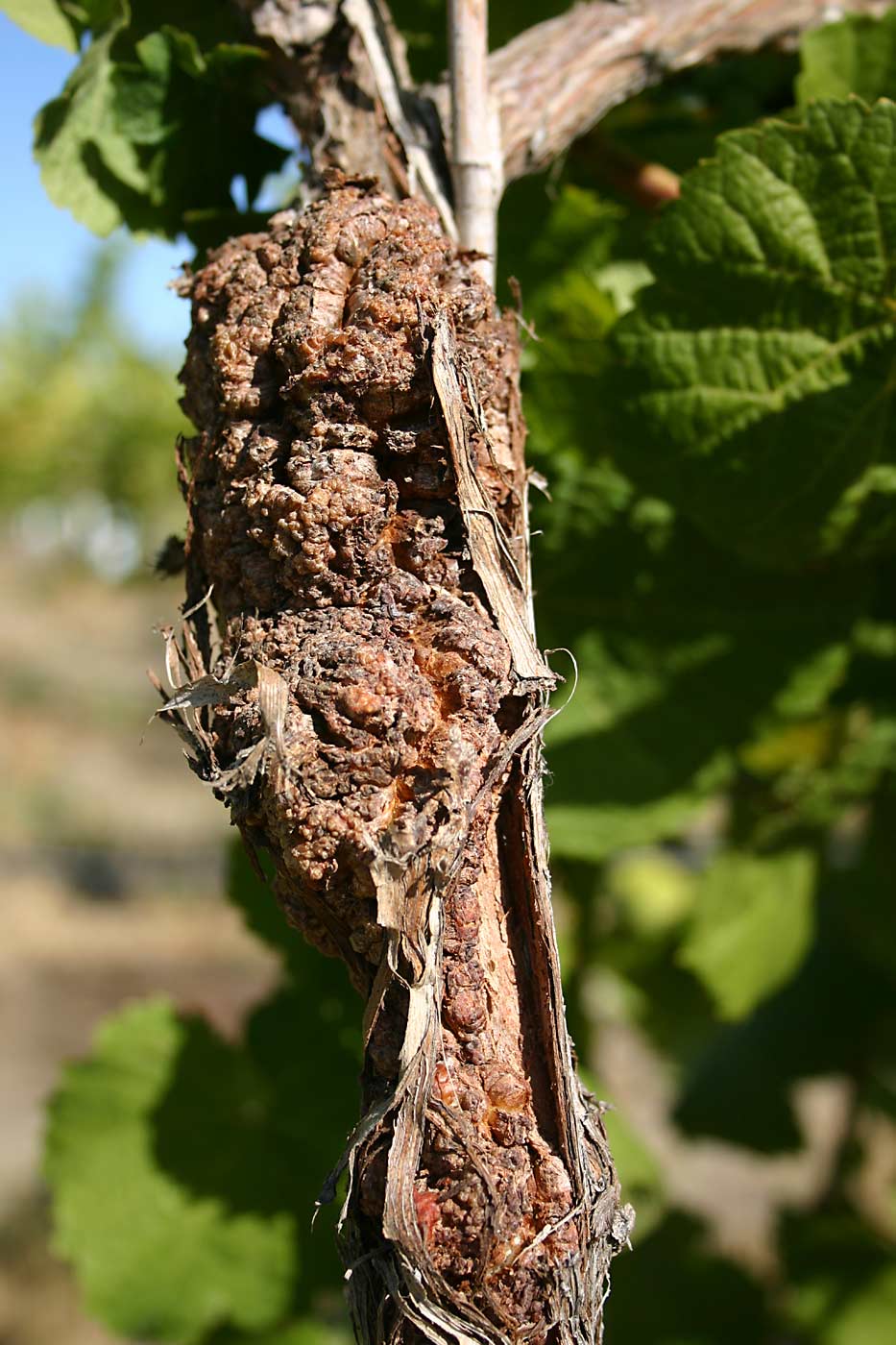Recent outbreaks of crown gall in Washington vineyards, following cold damage during the 2016-2017 winter, created a research opportunity to see if growers who planted clean plants were spared.
“We wanted to see if the (clean plant) process is effective at reducing the risk of crown gall,” said Washington State University viticulture extension specialist Michelle Moyer.
It’s an open question, she explained at the Washington State Grape Society’s annual meeting in November in Grandview, Washington, because commercially available tests cannot reliably detect the pathogen in its dormant state, and the micro-tip propagation process used to produce clean plants reduces but does not eliminate it.

Michelle Moyer
However, Moyer’s survey uncovered another issue entirely: Many growers misunderstand what it means to have certified clean plants. It’s a misunderstanding that could put the industry at risk for more than crown gall.
“We discovered that most people had no idea what certified means. They said, ‘Oh I got the vines from a certified nursery.’ But the nursery is not certified, the material is,” Moyer said at the meeting. Of 55 blocks that were surveyed, 36 claimed to be planted with certified material; only four were actually fully planted with certified material when the records were checked with nurseries.
In a follow-up interview, she said that the experience illustrated growers’ unwillingness to wait for clean plants if there isn’t a sufficient supply available, even though they understand the importance.
“We’ve grown so fast, from 2008 to 2014 we grew so quickly and there was such a demand for plants that there was a bottleneck of the clean plant process,” she said, adding that Washington’s wine grape growers were accustomed to relatively quick plant propagation with own-rooted vines.
“We expect to order in November and deliver in March, but for that time period, we could not supply the demand needed for certified material,” she said. Growers would order certified material but not receive enough in time to finish planting a contracted block, so they would finish planting with whatever material they could get.
Best intentions met commercial reality and resulted in a lot of blocks with mixed plantings of certified and noncertified material.
That confounds her survey and could make management a challenge in the future if there are virus issues, so Moyer recommends if you can’t plant with all certified material, at least do it by blocks or rows so you know what is where.
As for crown gall, some vineyards suffered massive outbreaks after sudden temperature swings in early spring 2017 caused trunks to split, cracking open a window of opportunity for the lurking pathogen that causes crown gall.

Risk of crown gall disease, caused by a bacterium that hijacks the healing process after cold damage, appears to be reduced but not eliminated by planting certified vines. (Courtesy Michelle Moyer, Washington State University)
Agrobacterium vitis can live undetected in vines for years, waiting for a vine to grow callus to heal from cold damage.
The bacteria hijack the healing process, infecting plant cells with its own DNA. That causes the cells to produce a food source for the bacteria and it divides rapidly, like a cancer tumor, creating a gall that can girdle young vines.
The galls pose a problem when they restrict water or nutrient flow, but older vines can frequently handle such galls without symptoms.
Every wine growing region with cold winters deals with crown gall, but it’s rarely a problem in California. That’s why Moyer initially wanted to use the survey to determine the incidence of disease in certified vines from Washington nurseries, certified vines from nurseries outside the state, and noncertified vines.
So far, all she has is anecdotal evidence.
“Isn’t it interesting that all these vineyards that have these severe outbreaks of crown gall are the noncertified vineyards,” she said. “So, maybe it looks like micro-tip propagation reduces the risk.”
A new study from Cornell University pathologists using a much more robust test for the bacteria — 10,000 times more sensitive than the standard — found that yes, clean plant therapy with micro-tip propagation works, said virologist Marc Fuchs.
“The short answer is yes, we can produce vines for which the level of crown gall is below detectable levels, what we refer to as clean vines,” Fuchs said. “The conventional tests are not robust enough, so we’ve been dealing with a lot of false negatives.”
Just as in Washington, growers in New York have been frustrated by crown gall popping up in vineyards planted on virgin sites with “so-called clean vines,” Fuchs said. The need for more education about the clean plant process persists everywhere grapes are grown, he agreed.
Beyond planting clean plants, the best strategy for avoiding crown gall damage: plant on sites with minimal risk of cold damage, Moyer told growers at the Grape Society meeting.
“It is the canary in the coal mine. Crown gall is a pretty good indicator of poor site selection, because you can have infected vines, but if you have a good site, it’s not a big deal,” she said.
If you get crown gall every year, however, it might be time to think about growing something other than grapes. •
—by Kate Prengaman






Leave A Comment